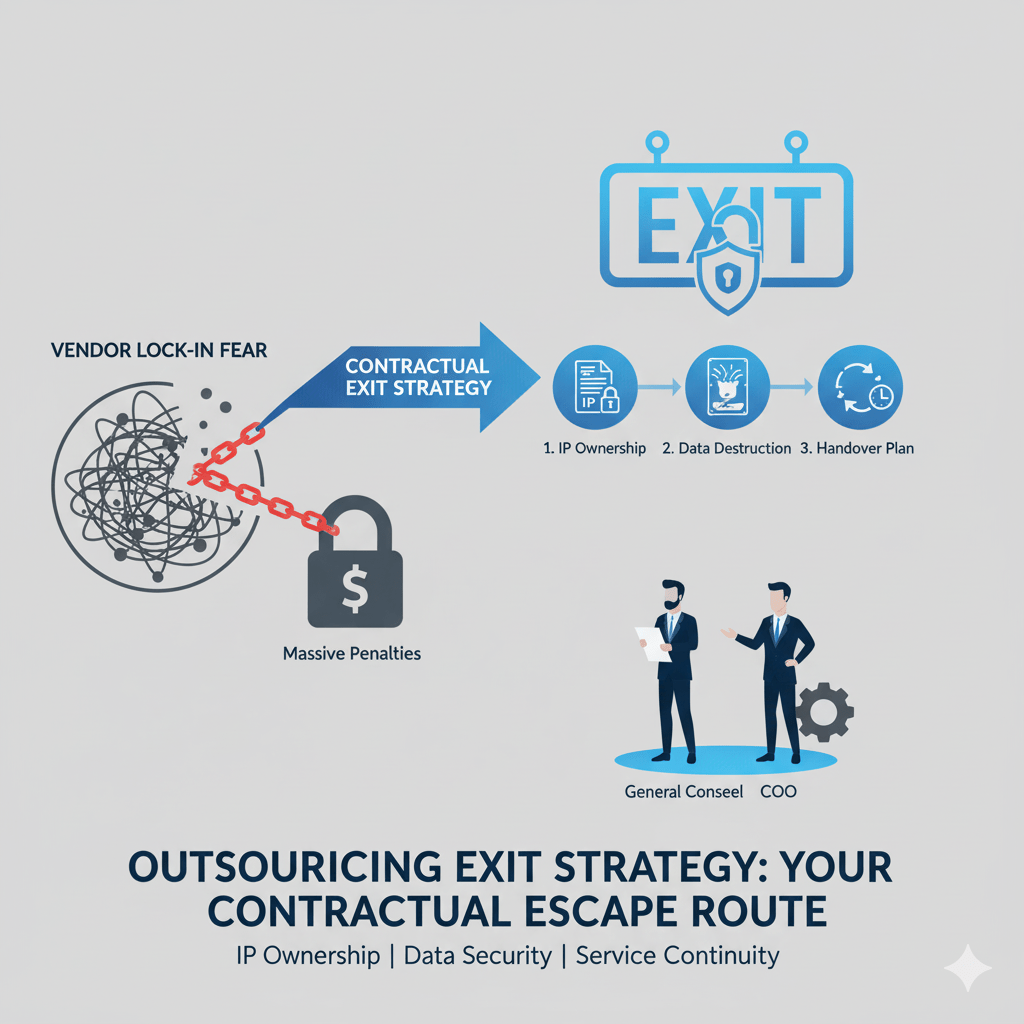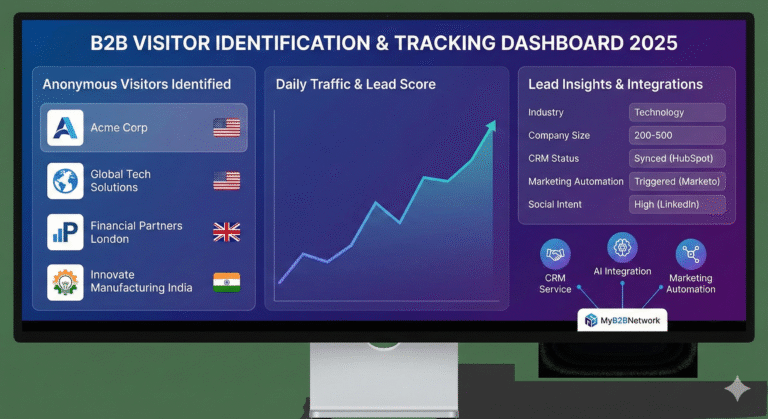
The Vendor Lock-In Fear: Your Biggest Contractual Risk
For General Counsel, VPs of Procurement, and COOs, the greatest fear in any outsourcing agreement is not poor service quality (though that is a major concern), but the disastrous financial and operational impact of vendor lock-in. A poorly defined contract makes switching to a new, better provider impossible, forcing you to endure poor quality or pay massive, unbudgeted penalties to leave. The solution, which is counter-intuitive, requires planning and contractually mandating your Exit Strategy before the service even begins. This ensures you always maintain leverage and service continuity, regardless of how the relationship ends.
The Exit Strategy Blueprint: Three Contractual Requirements
An effective Exit Strategy is a blueprint for an orderly divorce, protecting your assets and your operational stability. Integrate it fully into your Master Service Agreement (MSA).
| Contractual Requirement | Why It Matters (The Risk) | Key Clauses to Mandate |
| 1. Intellectual Property (IP) Ownership | The vendor may claim ownership or licensing rights over the developed work (code, algorithms, data analysis reports). | “Work for Hire” Clause: Explicitly states that all newly developed IP is owned by your company upon final payment. |
| 2. Data Destruction & Transfer | Sensitive data remains exposed on the vendor’s servers long after the contract ends, risking a breach. | Mandate the Secure Destruction of all sensitive data, requiring a formal, certified Destruction of Data Certificate. |
| 3. Knowledge & Resource Handover | Switching vendors causes a knowledge gap, leading to operational collapse and months of delays for the successor team. | Define a Transition Period (e.g., 90 days) during which the outgoing vendor must provide documentation, access logs, and training to your new provider. |
Contractual Best Practices for COOs
To build a robust exit strategy for services like AI Development Services or Technology Services, General Counsel must focus on the following:
- Define “Critical Failure”: The contract must clearly define what constitutes a critical failure (e.g., missed SLA targets for 3 consecutive months) that allows you to terminate the contract for cause without penalty.
- Specify Transition Costs: Contractually define the cost of the handover services upfront. Outgoing vendors would not be allowed to block the exit by charging excessive, surprise fees for data transfer or final training.
- Ensure Continuity: Require the vendor to continue providing base services at the existing level during the Transition Period. This prevents a gap in service provision while the new team ramps up. As the EBA Guidelines on outsourcing arrangements for financial institutions show, you cannot become an “empty shell” that risks regulatory compliance.
- The 19 Clauses of a Winning Outsourcing Contract highlights that you must treat IP, Data Protection, and Termination as critical legal scaffolding, not optional add-ons.
Don’t Start a Project Without an Exit Plan.
Vendor lock-in is a crisis waiting to happen. Your contract should give you leverage, not hold you hostage. We must find a partner prepared to sign off on a clean one to manage this risk.
MyB2BNetwork specializes in helping General Counsel and Procurement VPs secure contracts for AI Development Services, Technology Services, and IT Services that prioritize your safety.
We help you define the non-negotiable legal scaffolding and connect you with pre-vetted provider companies who accept strict IP, data destruction, and transition clauses.
Secure your operation before you sign the contract. Connect with MyB2BNetwork today to find a verified, risk-mitigating partner and build your next winning contract.
Now that you’re here
MyB2BNetwork generates new leads, offers insight on your customers
and can help you increase your marketing ROI.
If you liked this blog post, you’ll probably love MyB2BNetwork, too.



